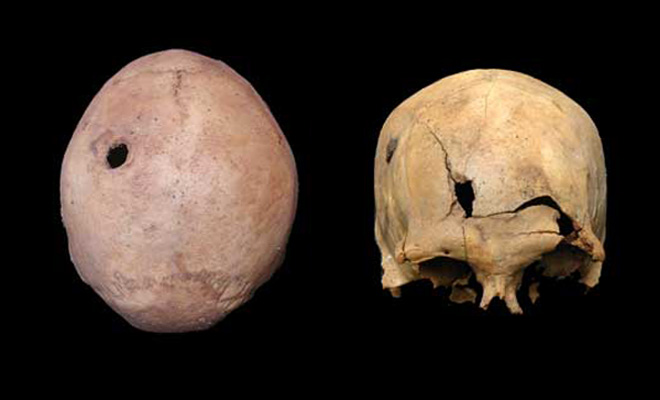Even though 16th century Spanish sources emphasize the use of swords in war, it seems the Conquistadors may have preferred firearms, lances, maces and a variety of local weapons while slaughtering the Incas.
A team of anthropologists examined 258 skeletons buried in 2 Inca cemeteries near Lima between 1470 and 1540. The Spanish captured the Inca Emperor in 1532, so the violent deaths among the skeletons are likely to have been either inflicted by the Conquistadors or the result of Inca-on-Inca violence in the wake of the Conquista.
“I’m struck by the severity of violence in certain individual cases, where the skull was essentially crushed, repeatedly stabbed or struck, or shot through by gunshot,” comments archaeologist Steven Wernke of Vanderbilt University in Nashville. Whoever killed these individuals wanted to intimidate survivors as well, he asserts.
One man’s skull contained two holes and radiating fractures consistent with damage produced by early guns that shot ammunition at low velocities.
Another male skull sported three small rectangular openings in the back of the head. These injuries resemble those on skulls from a 1461 battlefield cemetery in England, Murphy says. Medieval weapons tipped with steel spikes or sharp beaks probably caused these wounds, she proposes.
Three other skeletons exhibited injuries likely due to Spanish weapons. Other skeletons contained head and body fractures probably inflicted by attackers bearing Inca weapons.
The absence of sword wounds, though surprising, does make sense when you consider that many of the Spanish warriors weren’t army regulars but soldiers of fortune. They would have been more likely to use medieval maces, pistols or local weapons.
